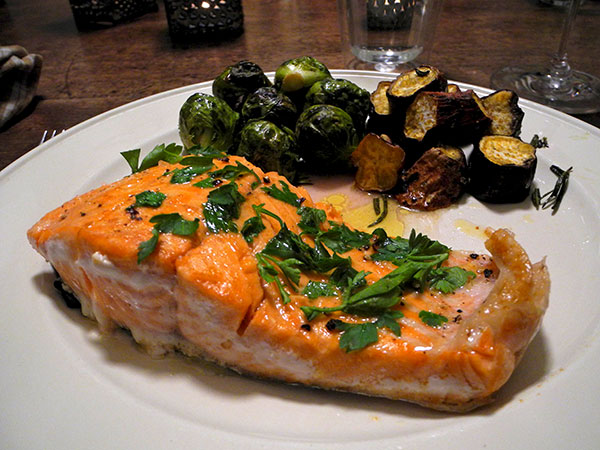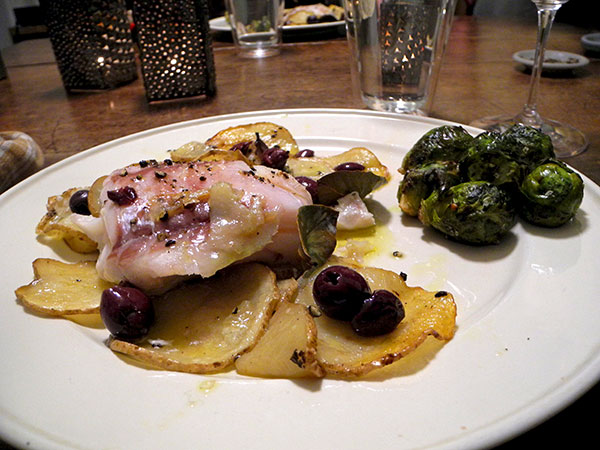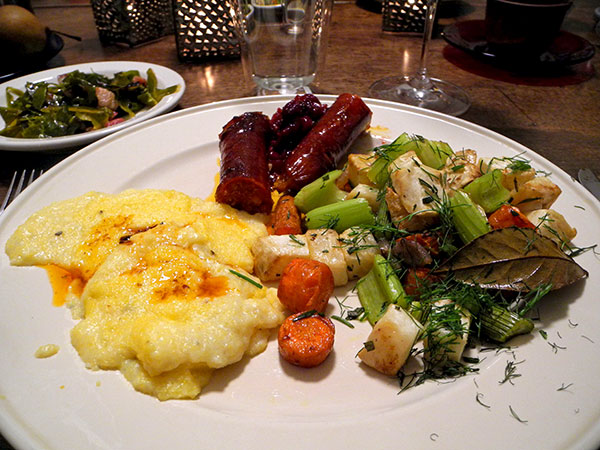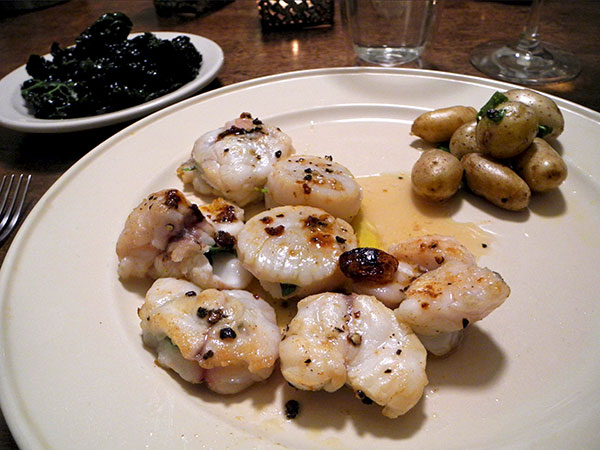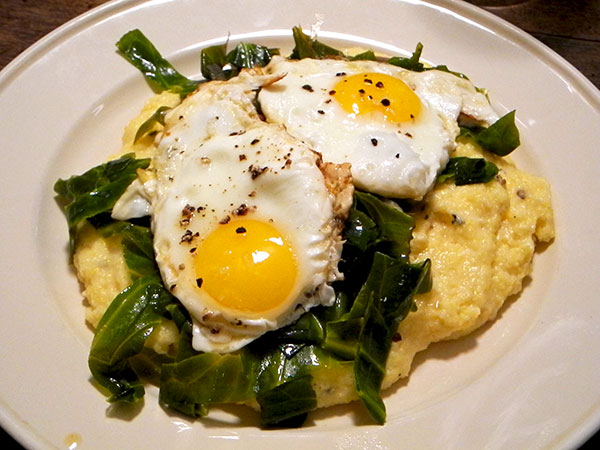Late one afternoon, having earlier been unable to find a fish monger at the Greenmarket, I decided that I should start thinking about what I would prepare for dinner. Fish has more and more become my first choice, and with familiarity with my sources and experience in cooking it I’ve become pretty fussy about where I buy it. We both happen to love salmon, probably as much as any other fish, or shellfish (oysters definitely come first, but I don’t cook them). Because of the availability throughout the week, normally, of six or so local fishermen at the Greenmarket, if I buy fish at the Whole Foods down the block, which I normally patronize only for staples, it’s always wild salmon from the Northwest, and almost always when it’s on sale. I assume it’s been frozen at some time since leaving the water, but, even knowing what it tastes like in Oregon and Washington, I don’t think it’s lost anything in the process.
I bought salmon. This was one of the best servings we’ve ever had at home, and it’s absurdly easy to prepare.
A word on the sweet potatoes (by the way, they would seem to be a natural as an accompaniment to salmon): I found these particular small samples hanging in a darkened closet in a paper bag. That is how I usually store sweet potatoes, but I had no memory or record in my trusty digital food log of their being there, or at least not still being there. I think they had to be at least a year old. They had darkened and were so dessicated they now weighed almost nothing. I was going to throw them out, but decided to give them a try. They were phenomenal. Note to self and all survivalists: I it ever becomes necessary to horde fresh, uncooked food in an emergency, without refrigeration and for an extended period of time, you could do a lot worse than choosing sweet potatoes.
- Coho salmon fillet from Whole Foods, roasted in a shallow enameled cast-iron pan in butter (for 1 pound of salmon, use 2 tablespoons of butter), seasoned, then finished with parsley from Norwich Meadows Farm
- small Japanese sweet potatoes, from [I-don’t-remember-because-it-was-so-very-long-ago-but-they-were-incredibly-delicious], tossed with olive oil, salt, and pepper, placed in an unglazed ceramic pan with some thickly-sliced garlic from Berried Treasures placed on top of the pieces (to avoid the garlic burning), and finished with chopped rosemary from Queens County Farm
- Brussels sprouts from Central Valley Farm, tossed with olive oil, freshly-ground black pepper, and a generous amount of salt, then roasted
- the wine was a California red, Santa Barbara Winery Pinot Noir 2012
